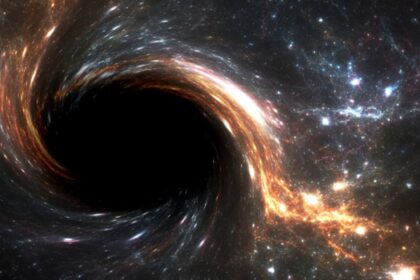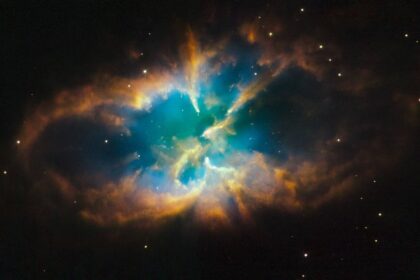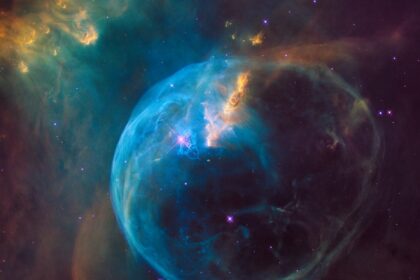A neutrino is a very light elementary particle without an electric charge. Neutrinos are produced during various radioactive decays, such as beta decay in atomic nuclei, during natural nuclear reactions occurring in stars, during reactions in reactors or gas pedals, and in a number of other processes. These particles permeate the entire cosmos, but they interact extremely weakly with matter. About 90 billion neutrinos per second pass through each square centimeter of the Earth’s surface, and thus through us. The study of neutrinos is underway all over the world: The neutrino signal propagates without interference, in contrast to electromagnetic waves, which means that the registration and study of these particles can provide new information about the neutrino sources and their properties.
Neutrinos can arise in the decay of hadrons in astrophysical objects. However, such sources are at sufficiently large distances, which means that recording astrophysical neutrinos requires angular resolution that far exceeds the capabilities of modern neutrino telescopes. From this point of view, one interesting source of neutrinos is the Moon, which is at a fairly close distance from Earth. Bombarding the lunar surface, cosmic rays produce mesons, which are slowed down in the surface layer of the loose lunar soil and decay to produce low-energy neutrinos. In this way, the Moon becomes a source of neutrinos that can be detected by neutrino telescopes.
In their work, scientists from the Nuclear Research Institute calculated the flux of low-energy neutrinos arising from cosmic rays bombarding the surface of the Moon. Numerical simulations of the interaction of cosmic rays with regolith (lunar soil) and counting of neutrinos from the decays of resulting hadrons have shown that the ratio of lunar and atmospheric neutrino fluxes toward the Moon in the low-energy range (from 10 MeV to approximately 1 GeV) is close to unity, but their spectra differ greatly. Registering neutrinos with an appropriate detector is itself a laborious task, not only because of the high penetrating power of neutrinos, but also because of the noise from other particles that can mimic neutrino interactions, and distinguishing between neutrinos from different sources is all the more difficult.
“Despite the similar origin of lunar and atmospheric neutrinos, the peculiar spectrum of the former, caused for the most part by the lack of atmosphere on the Moon, makes it potentially possible to distinguish between neutrinos of different origin. Moreover, the simulation has revealed a dependence of the lunar neutrino spectrum on the regolith density, which can further help to study the properties of the lunar soil.
The identified features can be used to search for lunar neutrinos in future neutrino experiments on Earth. However, the angular resolution of neutrino detectors is currently quite low compared to the angular size of the Moon in the sky. Also, good energy resolution is needed to study the spectrum of such neutrinos in detail. The researchers conclude that detecting lunar neutrinos would require not just large, but huge neutrino detectors with exceptionally high energy and angular resolution, a task that may one day become feasible.
The observation of lunar neutrinos would make the Moon the closest astrophysical source for which the concept of multi-channel astronomy works, which aims to learn about cosmic processes by studying high energy waves, particles and cosmic rays emitted by the same extraterrestrial sources.




